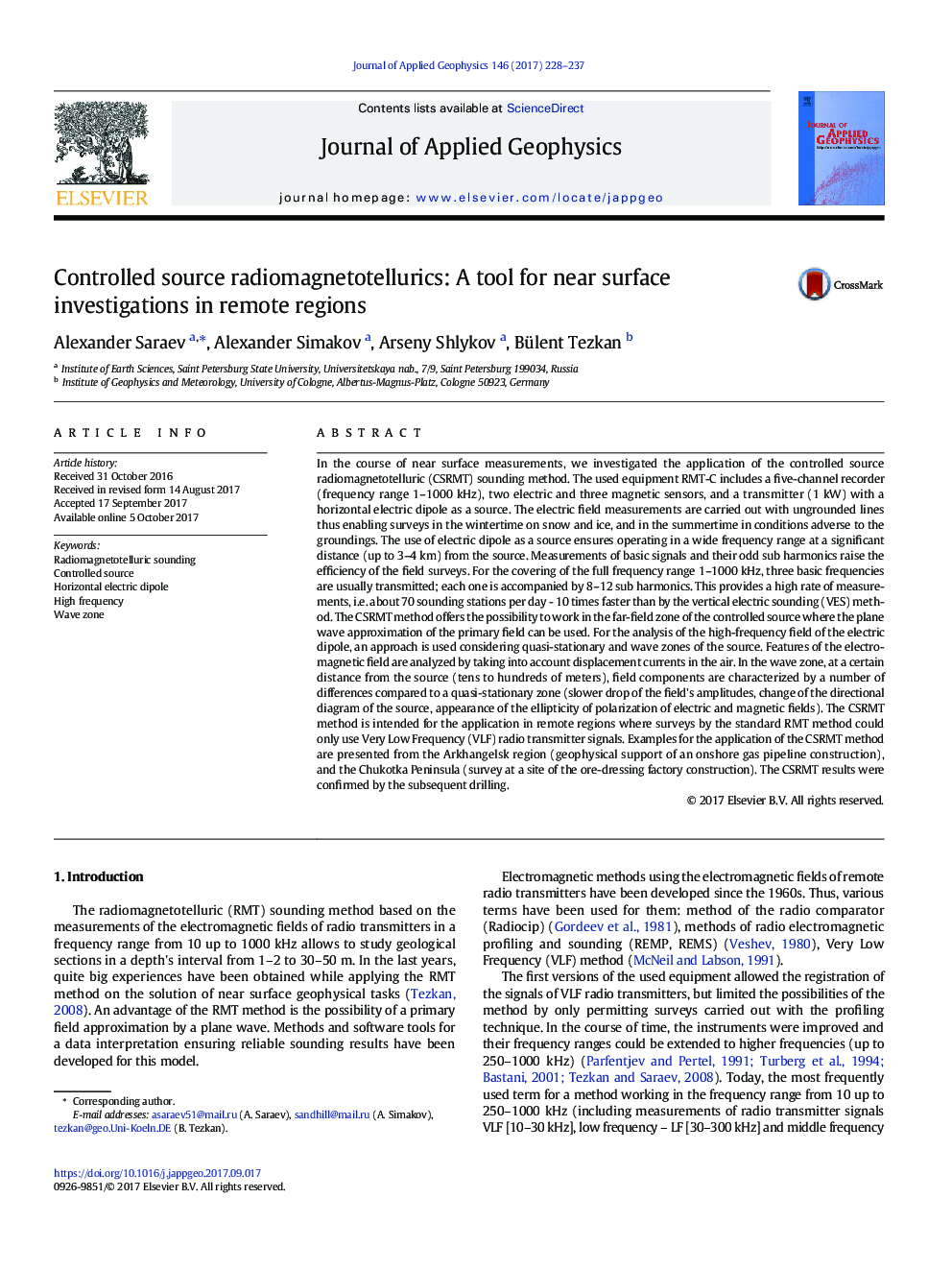| Article ID | Journal | Published Year | Pages | File Type |
|---|---|---|---|---|
| 5787061 | Journal of Applied Geophysics | 2017 | 10 Pages |
Abstract
In the course of near surface measurements, we investigated the application of the controlled source radiomagnetotelluric (CSRMT) sounding method. The used equipment RMT-C includes a five-channel recorder (frequency range 1-1000Â kHz), two electric and three magnetic sensors, and a transmitter (1Â kW) with a horizontal electric dipole as a source. The electric field measurements are carried out with ungrounded lines thus enabling surveys in the wintertime on snow and ice, and in the summertime in conditions adverse to the groundings. The use of electric dipole as a source ensures operating in a wide frequency range at a significant distance (up to 3-4Â km) from the source. Measurements of basic signals and their odd sub harmonics raise the efficiency of the field surveys. For the covering of the full frequency range 1-1000Â kHz, three basic frequencies are usually transmitted; each one is accompanied by 8-12 sub harmonics. This provides a high rate of measurements, i.e. about 70 sounding stations per day - 10 times faster than by the vertical electric sounding (VES) method. The CSRMT method offers the possibility to work in the far-field zone of the controlled source where the plane wave approximation of the primary field can be used. For the analysis of the high-frequency field of the electric dipole, an approach is used considering quasi-stationary and wave zones of the source. Features of the electromagnetic field are analyzed by taking into account displacement currents in the air. In the wave zone, at a certain distance from the source (tens to hundreds of meters), field components are characterized by a number of differences compared to a quasi-stationary zone (slower drop of the field's amplitudes, change of the directional diagram of the source, appearance of the ellipticity of polarization of electric and magnetic fields). The CSRMT method is intended for the application in remote regions where surveys by the standard RMT method could only use Very Low Frequency (VLF) radio transmitter signals. Examples for the application of the CSRMT method are presented from the Arkhangelsk region (geophysical support of an onshore gas pipeline construction), and the Chukotka Peninsula (survey at a site of the ore-dressing factory construction). The CSRMT results were confirmed by the subsequent drilling.
Keywords
Related Topics
Physical Sciences and Engineering
Earth and Planetary Sciences
Geophysics
Authors
Alexander Saraev, Alexander Simakov, Arseny Shlykov, Bülent Tezkan,
